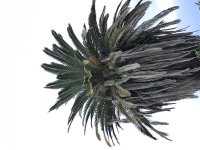Hello,
A week ago, in Barcelona, I had the opportunity to compare my Zeiss HT 10x42 with a Leica Noctivid 10x42. I was interested, mainly, in the veiling glare control of the Noctivid, mentioned by almost all their users.
Well, the Noctivid really impressed me with the incredible veiling glare control!!!! I, with the shop owner at my side, looked at trees and buildings edges with the sun almost in front. The Zeiss HT showed a very notable and disturbing veiling glare, that "milky" veil in the image. The Leica NV showed almost nothing of a veil. NOTHING!!!! It is a very important feature in a binocular!!!! Looking from the front, all the rings and ribs inside the Leica tubes are totally non reflecting. The HT, on the contrary, shows rings with a very bright surfaces, innaceptable to me. And, also, the HT prism reflect the sun light back to the front. When looking into the NV, ALL IS DARK AND NON REFLECTING!!!!!
About the other optical caracteristics, looking away of the sun, I cannot see differences between both binoculars. The colours and contrast were very simmilar. As a result, the details resolution or "sharpness" were also comparable. The ergonomic design is, to me, much, much better in the Zeiss HT. May be, to me, the best designed binocular in this respect, along the Zeiss SF.
I don´t understand why Zeiss (and Swarovski by the way) did not worked in the control of the glare in their binoculars...It can be a major issue in some difficult light situation, very common in the field....
PHA







